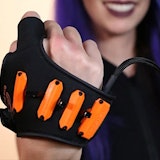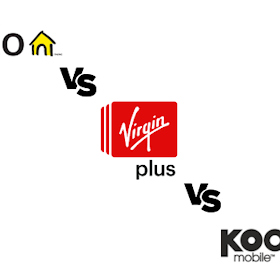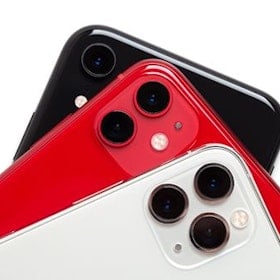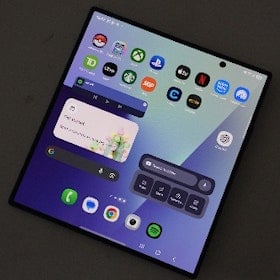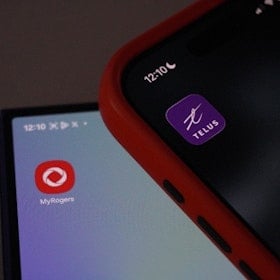
Both the Samsung Galaxy S6 and the dual-curve Galaxy S6 Edge have been unveiled at Mobile World Congress (MWC) in Barcelona. The new phones represent a significant change in direction for Samsung, and the first real shake-up we’ve seen of the Galaxy series since the GS3 was unveiled in May 2012.
The new focus has two important aspects, both of which address two of Samsung’s most significant areas of complaint.
- Design – no more plastic. Both the Galaxy S6 and Galaxy S6 Edge are made of machined aluminum and super-tough Gorilla Glass 4.
- User interface (UI) – fewer gimmicks, less bloatware. Samsung has traditionally bogged down its TouchWiz interface with unneeded apps and esoteric features. The new TouchWiz has reportedly seen a 40% reduction in features, bringing it back to basics.
The idea that Samsung could become a company that focuses on build quality and features that actually matter is promising. Instead of practicing the kind of thinking behind looking at a car and thinking “what if it had a jet engine and flames down the side” , which is admittedly a fun idea but would be an expensive and pointless undertaking, we might start to see functional, mature devices from Samsung in future.
Two phones to rule them all

It’s becoming clearer that Samsung believes the future of phones lies in curved screens. It’s also been clear that the general public disagrees. The Note Edge, which debuted alongside the well-liked Note 4, for instance, was poorly received. This was thanks in part once again to Samsung’s penchant for cramming in more software features than was necessary, and in part because new technology is often viewed with skepticism.
This time the Korean giant is trying again, but with a more subtle approach.

Both the GS6 and GS6 Edge boast essentially identical specifications. Screen size, resolution, cameras, internal power – all the same. The UIs are the same, too, except for some small extra options for alerts on the S6 Edge. The only reason you would choose one over the other is the form factor.
Samsung is letting the world get used to the idea of curved phones before it pulls the traditional design all together. It’s a smart move. Right now edge displays are love-or-hate, and you don’t want to alienate half your user base by moving too quickly. Releasing two phones was a good idea this time around. It’ll be interesting to see if the trend continues next year, or if Samsung will feel confident enough to go all curve in 2016.
The design we want

The glass + metal design choice has always been a mixed bag, no matter who's made it. When Apple first introduced it on the iPhone 4, it was a scandal of cracked screens and shattered rear plates. Since then, toughen glass has come a long way – far enough that we’re actually not particularly worried.
The Xperia Z3 series, for example, was made of Gorilla Glass 3 with a metal edge. They held up quite well to punishment. The S6 and S6 Edge have the next-gen Gorilla Glass 4, which should be even tougher and lighter.
As for overall look, there’s a very iPhone 6 feel here. That’s thanks more to the curved edges on the GS6 more than anything. While it’s certain to invite condescension from the Apple crowd, remember that rounded edges have been around for a while now. Take a look at the iPhone 6 next to the Nokia Lumia 925 some time and you’ll see what we mean.
If you want a point of differentiation, the S6 will be available in five colors: White Pearl, Black Sapphire, Gold Platinum, Blue Topaz and Green Emerald. The last two look a lot better than did the metallic blue plastic option for the GS5. The transparency of the rear glass plate lends a reflective quality and depth that you don’t see on many other handsets.

Unfortunately, it's also non-removable. This is the first time Samsung has made a phone with an un-switchable battery. Expect cries of displeasure from the hot-swapping crowd, but the average user shouldn't be worried.
Both phones – the S6 and Edge – feature a 5.1 inch quad-HD (2560 x 1440) display. This is perhaps unnecessary on a screen this size. The resolution and dimension pairing gives you a huge 577ppi, compared to the 326ppi of an iPhone 6.
Higher resolutions require more battery power and, while you can tell the difference between a 1080p and quad-HD display when held side by side, the market continues to demand phones with better battery life.
That being said the vox populi is a two-headed beast. While one side asks for longer charge, the other eats up marketing campaigns that focus on bigger numbers, so it was inevitable that we’d see a jump to 2560x1440 in 2015.
Some big numbers that are actually useful are the options for storage. Beginning with 32GB (eat that, Apple), there are also options for 64GB and 128GB. Unfortunately there will be no microSD slot for expanding storage any further. What you get is what you get.
The biggest disappointment is that the GS6 and S6 Edge will not be water resistant. That was a great feature on the S5 and it’s sad to see it go.
The UI we need

Samsung might be the most popular Android handset maker, but it’s not always the best. It’s certainly up there, but you could just as easily show someone an offering from HTC or Sony and, after weighing up the strengths of each, have them pick any of the three.
The only thing really holding Samsung back has been its user interface: TouchWiz. Year after year, Samsung bogs it down with unnecessary “features”. What you get is a phone with huge amounts of processing power going to waste on things you never use. Despite boasting superior or identical specs to other devices, Galaxy phones often end up being jerky and laggy in comparison.
This year all that is apparently gone. Samsung has told us that it listened to its fans and its “friends on the internet” and ditched up to 40% of TouchWiz features. With any luck we’ll finally get the same attractive interface that Samsung has offered for years, but this time one that lets the incredible hardware do its thing, unfettered by pointless background operations and annoying notifications.
The new king of cameras?

The GS5 was possibly the best camera phone on the market at release. This was also the first time a Samsung Galaxy phone wrested the camera crown from Apple. Unfortunately for team Samsung, the iPhone 6 and 6 Plus came along later in 2014 and blew it out of the water.
The Note 4 and Note Edge both also had astounding shooters, but arguably still not ones able to best the iPhone 6 and 6 Plus.
The GS6 and S6 Edge look to have upped the game even more. Any improvement, any at all, over the Note 4, and Samsung may have taken back the number 1 spot. The game is on.
In pleasing news, the number of megapixels for the rear camera has remained at 16MP. In truth that’s already more than is really necessary, but it’s good to see Samsung didn’t bow to marketing pressure and go higher for the sake of a bigger number.
The improvements come elsewhere:
- Optical Image Stabilization (OIS). This is a big deal. With OIS, the lens actually moves up and down to counter the movements of your hand. This frees up the software, which would otherwise be responsible for doing this with clever programming tricks, to focus on more important elements of image generation. It's the entire reason that the iPhone 6 Plus has such a superior camera to the iPhone 6.
- Quick launch. From any screen in TouchWiz, double-tap the home screen and the camera app will launch in under 1 second.
- Tracking autofocus. Tap to focus on an object and, even when it starts moving, maintain focus.
- Auto HDR. HDR mode now turns itself on automatically when the camera thinks it’s needed. HDR is extremely helpful for those shots with multiple light conditions, such as an image featuring a bright light source in a dim room.
- IR white balance. Infrared is used to detect the correct white balance, no matter the situation. This should make for improved color accuracy.
The front-facing camera has also been upgraded to 5MP with an f1.9 aperture. While more megapixels is not always good, around 5MP is about the minimum required for a great modern phone camera. Add to that the 1.9mm aperture, which should help with low-light shots, and you should be cranking out great-quality selfies with as much regularity as you dare.
Thoughts
Both the Galaxy S6 and S6 Edge look like they’ll be great phones. Samsung has returned to the fundamentals in 2015, which is exactly what it needed to do.
We also love this year's design focus. It’s not new or innovative, but it suggest a significant improvement over Samsung’s past offerings. We also love that it will be available in many colors. Black and white phones are starting to get a little boring.
We’ve been waiting for a Galaxy phone release like this for a long time. Let’s hope that the real-world phone lives up to how it sounds on paper.
Related Articles
Find Better Phones and Plans
Hundreds of cell phone plans unpacked. All the facts. No surprises.


